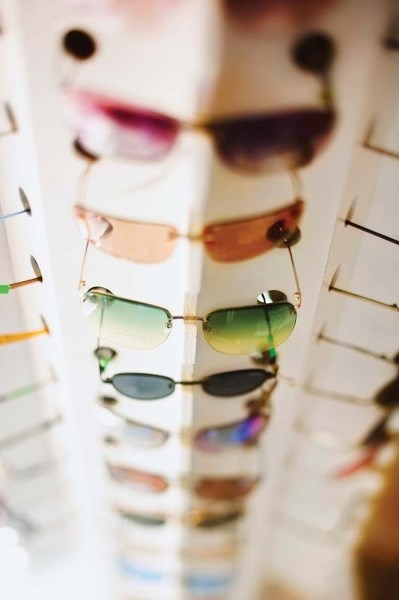If your mother ever told you to never look directly at the sun at the risk of going blind, in some ways she was right.
As part of the Canadian National Institute for the Blind’s (CNIB) summer campaign on the harmful effects of ultraviolet (UV) radiation, the organization is urging Canadians to sport their shades even when it isn't sunny.
“It doesn’t need to be a bright sunny day for you to get ultraviolet light into your eyes and cause damage to (them),” explained Keith Gordon, vice president of research with CNIB. “The ultraviolet rays can get absorbed through cloud and reflected into the shade. In the winter it reflects off snow and ice surfaces to a very large extent.”
UV rays rarely result in immediate damage on the eyes other than “eye sunburn” or photokeratitis where the cornea becomes inflamed, said Gordon, but research has shown that long-term UV exposure is associated with cataract formation and macular degeneration.
Although cataracts – clouding of the lens of the eye that can eventually lead to blindness – can be removed through surgery, there is no treatment for the most common type of macular degeneration, the deterioration of tissue cells making up the retina.
“It’s a cumulative lifetime exposure to sunlight that causes damage,” stated Gordon. “That’s why it’s very important to start wearing sunglasses early on in life.”
The World Health Organization estimates that up to 80 per cent of UV damage occurs before the age of 18. Children spend more time outdoors and therefore receive almost three times more the annual dose of UV than adults.
The Canadian Association of Optometrists recommends investing in a quality pair of sunglasses that have properties similar to prescription lenses. Gordon explained consumers expect their sunglasses to block 99 per cent of UVA and UVB rays, but not all do.
Through an investigation Gordon conducted into the protective properties of sunglasses against UV radiation, he found several pairs at the lower end of the sample size's price range that did not absorb UV light to the degree they were marketed as.
"One needs to be very careful with the very cheap sunglasses - the ones less than $5 in my experience," he remarked. "But there’s quite a range of prices that have decent absorption of ultraviolet light."
Another characteristic which distinguishes high quality sunglasses from ones you might find at the dollar store is the quality of vision.
Deborah Newby, a registered optician at MDO Opticians & Sunglass Specialists in St. Albert, explained that compared to the cutting and shaping of a prescription eyeglass lens from glass or optical grade plastic, inexpensive sunglass lenses are cut from plastic sheets.
"Not only are you not sure you're getting UV (protection)," she said, adding there is no regulatory body in Canada to ensure products that boast UV protection actually provide it, there is also warpage.
"There’s less distortion of the light and the lenses themselves are better in the more expensive (price range). The glasses are also more comfortable," added Gordon.
Other characteristics people look for when choosing sunglasses are polarization to reduce glare, mirror coating to reduce the light entering the eye and anti-reflective coating to heighten visual acuity in the sun.
Newby stated the current trend is to have sunglass lenses tinted the same colour as the frame. However style also varies by use, whether a person is using their "sunnies" for sport or for fashion. Polychromatic lenses, which automatically darken in bright light, are popular for men and women aged 45 years and up, while golfers prefer brown and copper tints to minimize light distortion.
"People will say, 'I don’t want to buy a pair of expensive sunglasses because I just lose them,' but they'll buy great boots and shoes … and this and that and they won't protect their eyes," commented Newby. The optician with 20 years' experience admitted she sees the trend changing with new parents making it a habit with their kids to sport their shades regularly.
Gordon said the sunglass trend has evolved similarly to the widespread use of sunscreens that started more than a decade ago.
"I think a lot of people now are wearing sunglasses for more than just fashion reasons."
To protect your eyes from the dangers of UV radiation, CNIB recommends all Canadians:
• Wear sunglasses with at least 99 per cent protection from UVA and UVB rays year-round, even on cloudy days<br />• If you require vision correction, wear contact lenses that provide UV protection and pair them with quality sunglasses for an added layer of defence<br />• Wear a wide-brimmed hat or baseball cap when outside<br />• Stay out of direct sunlight between 10 a.m. and 4 p.m., when the sun's rays are the strongest




